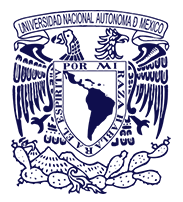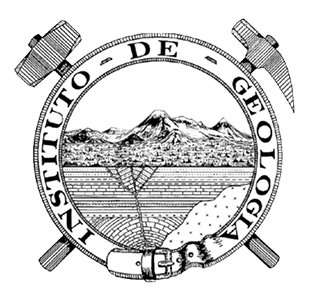Abstract
Seismic networks are essential for monitoring and understanding the space-time behavior of seismicity, especially in intraplate regions, which have been little studied. In central Mexico, the lack of infrastructure has hindered systematic recording of seismicity. This paper describes the creation and progress of the Queretaro Seismic Network, developed by the Instituto de Geociencias, to record and study seismic phenomena in central Mexico. The network began operation in September 2021. The earthquake catalog from September 2021 to December 2022 shows shallow activity (<20 km), with a NW-SE distribution, parallel to the central axis of the Sierra Madre Oriental. The spatial variation of microseismicity in the region is controlled by the geology of the physiographic provinces of the Trans-Mexican Volcanic Belt, the Mesa Central, and the Sierra Madre Oriental. The Queretaro seismic network will help to identify the main geological active structures. The epicentral locations are already included in the State Risk Atlas, which will facilitate the assessment of some potential risks to the population. It will also allow for the study of local and regional intraplate seismic activity and the creation of an instrumentally documented seismic history for assessing seismic hazard. The new seismic data will allow for the estimation of seismic source parameters, the proposal of crustal velocity models, the calculation of attenuation laws, and the establishment of the foundation for seismotectonic studies. The seismic network will help to study some cavern collapses and induced events, which are common in the region. The seismic network will enable the systematic instrumental monitoring of intraplate seismic activity in Central Mexico.
References
Aguirre‐Díaz, G. J., Nieto‐Obregón, J., & Zúñiga, F. R. (2005), Seismogenic basin and range and intra‐arc normal faulting in the central Mexican Volcanic Belt, Querétaro, México. Geological Journal, 40, 215–243.
Alaniz-Alvarez, S. A., Nieto-Samaniego, A. F., & Ferrari, L. (1998). Effect of strain rate in the distribution of monogenetic and polygenetic volcanism in the Transmexican volcanic belt. Geology, 26, 591–594.
Alaniz-Álvarez, S. A., Nieto-Samaniego, A. F., Orozco-Esquivel, M. T., Vasallo, L.F. & Shunshan , X. (2002). El sistema de fallas Taxco-San Miguel de Allende; implicaciones en la deformación posteocénica del centro de México. Boletín de la Sociedad Geológica Mexicana, 55, 12–29.
Bath, M. (1979?). Introduction to Seismology, 2a Edición. Birkhäuser, 428 pp.
Birch, F., (1960), The velocity of compressional waves in rocks to 10 kilobars, part 1. Journal of Geophysical Research, 65, 1083–1102. https://doi.org/10.1029/JZ065i004p01083
Birch, F., (1961). The velocity of compressional waves in rocks to 10 kilobars, part 2. Journal of Geophysical Research, 66, 2199–2224. https://doi.org/10.1029/JZ066i007p02199
Bormann, P. (ed.), (2012). New Manual of Seismological Observatory Practice. Vol. 1 and Vol. 2, IASPEI, GFZ German Research Centre for Geosciences, Potsdam; electronic edition, accessible via https://bib.telegrafenberg.de/publizieren/bibliotheksverlag/nmsop; DOI: 10.2312/GFZ.NMSOP_r1
Botero-Santa, P. A., Alaniz-Álvarez, S. A., Nieto-Samaniego, Á. F., López Martínez, M., Levresse, G., Xu, S.-S., & Ortega-Obregón, C. (2015). Origen y desarrollo de la cuenca El Bajío en el sector central de la Faja Volcánica Transmexicana. Revista Mexicana de Ciencias Geológicas, 32(1), 84–98.
Carrillo-Martínez, M. (1997). Hoja Zimapán 14Q-e (7), Resumen de la geología de la hoja Zimapán, estados de Hidalgo y Querétaro. México, D.F., Instituto de Geología, Universidad Nacional Autónoma de México. Carta Geológica de México, serie de 1: 100,000.
Carvalho, J., Vieira Barros, L., & Zahradník, J. (2016). Focal mechanisms and moment magnitudes of micro-earthquakes in central Brazil by waveform inversion with quality assessment and inference of the local stress field. Journal of South American Earth Sciences, 71, 333–343. https://doi.org/10.1029/JZ066i007p02199
Castro, R. R., Mendoza-Camberos, A., & Pérez-Vertti, A. (2018). The Broadband Seismological Network (RESBAN) of the Gulf of California, Mexico. Seismological Research Letters, 89(2A), 338–342.
Chávez Cabello, G., Torres Ramos, J. A., Porras Vázquez, N. D., Cossio Torres, T., & Aranda Gómez, J. J., (2011). Evolución estructural del frente tectónico de la Sierra Madre Oriental en el Cañón Santa Rosa, Linares, Nuevo León. Boletín de la Sociedad Geológica Mexicana, 63(2), 253–270.
Chen, Z., Wang, Z., Wu, S., Wang, Y., & Gao, J. (2022). MagInfoNet: Magnitude estimation using seismic information augmentation and graph transformer. Earth and Space Science, 9, e2022EA002580. https://doi. org/10.1029/2022EA002580
Dávalos-Álvarez, O. G., Nieto-Samaniego, A. F., Alaníz-Álvarez, S. A., & Gómez-González, J. M. (2005). Las fases de deformación Cenozoica en la región de Huimilpan, Querétaro y su relación con la sismicidad local. Revista Mexicana de Ciencias Geológicas, 22(2), 129–147.
D’Alessandro, A., & Stickney, M. (2012). Montana Seismic Network Performance: An Evaluation through the SNES Method. Bulletin of the Seismological Society of America, 102(1), 73-87. doi: 10.1785/0120100234
del Río Varela, P., Nieto-Samaniego A., Alaniz-Álvarez S., Ángeles-Moreno E., Escalona- Alcázar F., & del Pilar-Martínez, A. (2020). Geología y estructura de las sierras de Guanajuato y Codornices, Mesa Central, México. Boletín de la Sociedad Geológica Mexicana, 72(1), A071019. http://dx.doi.org/10.18268/BSGM2020v72n1a071019
Dickinson, W. R. (2009). Anatomy and global context of the North American Cordillera. En S. Mahlburg Kay, V. A. Ramos, & W. R. Dickinson (Eds.), Backbone of the Americas: Shallow Subduction, Plateau Uplift, and Ridge and Terrane Collision. https://doi.org/10.1130/2009.1204(01)
Dziewonski, A. M., & Anderson, D. L. (1981). Preliminary reference Earth model. Physics of the Earth and Planetary Interiors, 25(4), 297–356. https://doi.org/10.1016/0031-9201(81)90046-7
Earle, P., Bittenbinder, A., Bogaert, B. & Johnson, C. (2003). Turn to the worm: Seismic network operation using the USGS Earthworm system, in Observations and Research Facilities for European Seismology (ORFEUS). Electronic Newsletter, 5(1), http://www.orfeus‑eu.org/Organization/Newsletter/vol5no1/earthworm.html
Espinasa-Pereña, R., Arámbula, R., Ramos, S., Sieron, K., Capra, L., Hernández-Oscoy, A., Alatorre, M., & Córdoba Montiel, F. (2021). Monitoring volcanoes in Mexico. Volcanica, 4(S1), 223–246. doi: 10.30909/vol.04.S1.223246
Ferrari, L. (2000). Avances en el conocimiento de la Faja Volcánica Transmexicana durante la última década. Boletín de la Sociedad Geológica Mexicana, LIII, 84–92.
Friberg, P., Lisowski, S., Dricker, I., & Hellman, S. (2010). Earthworm in the 21st century. En European Geosciences Union General Assembly, 2–7 May 2010, Vienna, Austria, 12654 p.
García de León Martínez, L. (2018). Análisis de microsismicidad en el municipio de Peñamiller y su relación con el marco tectónico regional. [Tesis de Licenciatura, Ingeniero Geólogo], Universidad Autónoma de Zacatecas.
Ghasemi1, H., Itikarai, I., Hazelwood, M., Mckee, Ch., & Allen, T. (2018). A low-cost seismic network for Papua New Guinea. Australian Earthquake Engineering Society 2018 Conference, Perth, WA, Australia.
Gardner G. H. F., Gardner, L. W., Gregory, A. R. (1974). Formation velocity and density– the diagnostic basics for stratigraphic traps. Geophysics, 39, 770–780. https://doi.org/10.1190/1.1440465
Güven, C., Lorraine Wolf, L.W., Tuttle, M.P., & Rogers, S.R. (2023). The influence of sedimentary architecture on the formation of earthquake-induced liquefaction features: A case study in the New Madrid seismic zone. Engineering Geology, 312, 1-9. https://doi.org/10.1016/j.enggeo.2022.106946
Havskov, J., Ottemöller, L., Trnkoczy, A., & Bormann, P. (2012). Seismic Networks. En P. Bormann,(Ed.), New Manual of Seismological Observatory Practice 2 (NMSOP- 2), Potsdam. Deutsches GeoForschungsZentrum GFZ, 1–65. https://doi.org/10.2312/GFZ.NMSOP-2_ch8
Hauksson, E. (2011). California Integrated Seismic Network (CISN). En Bormann, P. (Ed.), New Manual of Seismological Observatory Practice, (1-2), (NMSOP-2), Potsdam; electronic edition, accessible via https://bib.telegrafenberg.de/publizieren/bibliotheksverlag/nmsop/nmsop-2002
Helmholtz-Centre Potsdam GFZ German Research Centre for Geosciences; GEMPA GmbH (2008). The SeisComP seismological software package. GFZ Data Services. https://doi.org/10.5880/GFZ.2.4.2020.003
Herrmann, R. B., & Canas, J. A. (1978). Focal mechanism studies in the New Madrid seismic zone. Bulletin of the Seismological Society of America, 68 (4), 1095–1102. https://doi.org/10.1785/BSSA0680041095
Instituto Nacional de Estadística Geografía e Informática (INEGI) (2020), Censo de Población y Vivienda 2020. Información Demográfica y Social. https://www.inegi.org.mx/programas/ccpv/2020/default.html#Resultados_generales (última consulta: 25 de febrero de 2025).
Instituto Nacional de Estadística Geografía e Informática (INEGI) (1910a). Tercer Censo de Población de los Estados Unidos Mexicanos 1910. Número de habitantes de la República por entidades federales. Instituto Nacional de Estadística Geografía e Informática. https://www.inegi.org.mx/programas/ccpv/1910
Instituto Nacional de Estadística Geografía e Informática (INEGI) (1910b). Tercer Censo de Población de los Estados Unidos Mexicanos 1910. Altitud y Población por seco de las capitales de las entidades federativas. Instituto Nacional de Estadística Geografía e Informática. https://www.inegi.org.mx/programas/ccpv/1910
Johnson, C. E., Bittenbinder, A., Bogaert, B., Dietz, L. & Kohler, W. (1995). Earthworm: A flexible approach to seismic network processing. Incorporated Research Institutions for Seismology (IRIS) Newsletter, 14, 1–4.
Langridge, R.M., Weldon II, R.J., Moya, J.C., & Suárez, G. (2000). Paleoseismology of the 1912 Acambay earthquake and the Acambay-Tixmadejé fault, Trans-Mexican Volcanic Belt. Journal of Geophysical Research, 105, 3019–3037. doi: 10.1029/199JB900239.
Lay, T., & Wallace, T. (1995). Modern Global Seismology. Academic Press, Inc., Cambridge, MA, 521 pp.
Lee, W. H. K., & Lahr, J. C. (1972). HYPO71: a computer program for determining hypocenter, magnitude, and first motion pattern of local earthquakes. USGS Open-File Report, 72–22. https://doi.org/10.3133/ofr72224
León Loya, R. A. (2014). Estado y clasificación de la microsismicidad en parte central de la Sierra Madre Oriental. [Tesis de Maestría, Posgrado en Ciencias de la Tierra, Universidad Nacional Autónoma de México].
Lienert, B. R. & Havskov, J. (1995). A Computer Program for Locating Earthquakes Both Locally and Globally. Seismological Research Letters, 66(5), 26–36. doi: https://doi.org/10.1785/gssrl.66.5.26
Lienert, B. R. E., Berg, E., & Frazer, L. N. (1986). Hypocenter: An earthquake location method using centered, scaled, and adaptively least squares. Bulletin of the Seismological Society of America, 76(3), 771–783.
Lomax, A., Satriano, C., & Vassallo, M. (2012). Automatic Picker Developments and Optimization: FilterPicker—a Robust, Broadband Picker for Real-Time Seismic Monitoring and Earthquake Early Warning. Seismological Research Letters, 83(3), 531–540, doi: 10.1785/gssrl.83.3.531.
Longuet-Higgins, M. S. (1950). A Theory of the origin of microseisms, Philosophical Transactions of the Royal Society of London. Series A, Mathematical and Physical Sciences, 243(857), 1-35
López Valdivia, E. N. (2014). Aplicación de métodos geofísicos en el estudio de la estructura cortical superficial en la parte central de la Sierra Gorda, Querétaro. [Tesis de Maestría]. Posgrado en Ciencias de la Tierra, Universidad Nacional Autónoma de México.
Magotra, N., Ahmed, N., & Chael, E. (1987). Seismic event detection and source location using single-station (three-component) data. Bulletin of the Seismological Society of America, 77(3), 958-971.
Miccolis, S., Filippucci, M., de Lorenzo, S., Frepoli, A., Pierri, P., & Tallarico, A. (2021). Seismogenic Structure Orientation and Stress Field of the Gargano Promontory (Southern Italy) From Microseismicity Analysis.Frontiers in Earth Science, 9, 589332. doi: 10.3389/feart.2021.589332
Mooney, W. D., Barrera-López, C., Suárez, M. G., & Castelblanco, M. A. (2023). Earth Crustal Model 1 (ECM1): A 1° 1° Global Seismic and Density Model. Earth-Science Reviews, 243, 727–747, https://doi.org/10.1016/j.earscirev.2023.104493
Nieto-Samaniego, A. F., Alaniz-Álvarez, S. A., & Camprubí í Cano, A. (2005). La Mesa Central de México: estratigrafía, estructura y evolución tectónica cenozoica. Boletín de la Sociedad Geológica Mexicana, 57(3), 285–318. http://dx.doi.org/10.18268/BSGM2005v57n3a3
Nieto-Samaniego, A. F., Barajas-Gea, C. I., Gómez-González, J. M., Rojas, A., Alaniz- Álvarez, S. A., & Xu, S. (2012). Geología, evolución estructural (Eoceno al actual) y eventos sísmicos del Graben Santiaguillo, Durango, México. Revista Mexicana de Ciencias Geológicas, 29, 115–130.
Nieto-Samaniego, A. F., Del Pilar-Martínez, A., Suárez-Arias, A. M., Angeles-Moreno, E., Alaniz-Álvarez, S. A., Levresse, G., Xu, S., Olmos-Moya, M. J. P., Báez-López, J. A. (2023). Una revisión de la geología y evolución tectónica cenozoicas de la Mesa Central de México. Revista Mexicana de Ciencias Geológicas, 40(2), 187–213.
Núñez-Cornú, F. J., Sandoval, J. M., Alarcón, E., Gómez, A., Suárez-Plascencia, C., Núñez, D., Trejo-Gómez, E., Sánchez Mariscal, O., Candelas Ortiz, J. G., & Zúñiga-Medina, L. M. (2018). The Jalisco Seismic Accelerometric Telemetric Network (RESAJ). Seismological Research Letters, 89(2A), 363–372. doi: 10.1785/0220170157
Nuttli, O. W. (1973). The Mississippi Valley Earthquakes of 1811 and 1812: Intensities, Ground Motion, and Magnitudes. Bulletin of the Seismological Society of America, 63 (1), 227–248. https://doi.org/10.1785/BSSA0630010227
Olivieri, M., & Clinton, J. (2012). An almost fair comparison between Earthworm and SeisComp3. Seismological Research Letters, 83(4), 720–727. https://doi.org/10.1785/0220110111
Orton, A. M., Wang, Z., Wang, L., & Woolery, E. W. (2016). Earthquake Hazard Mitigation in the New Madrid Seismic Zone. Kentucky Geological Survey, University of Kentucky, Lexington. Science and Public Policy, Report of Investigations 32 Series XII., 43 pp.
Ottemöller, L., Voss, P. H., & Havskov, J. (2021). SEISAN Earthquake Analysis Software for Windows, Solaris, Linux and Macosx, Version 12.0. University of Bergen, 607 pp. ISBN 978-82-8088-501-2. URL http://seisan.info.
Padilla y Sánchez, R. J. (2007). Evolución geológica del sureste mexicano desde el Mesozoico al presente en el contexto regional del Golfo de México. Boletín de la Sociedad Geológica Mexicana, 59(1), 19–42.
Pollitz, F. F., Kellogg, L. & Bürgmann, R. (2001). Sinking Mafic Body in a Reactivated Lower Crust: A Mechanism for Stress Concentration at the New Madrid Seismic Zone. Bulletin of the Seismological Society of America, 91(6), 1882–1897. doi:10.1785/0120000277
Quintanar, L., Cárdenas-Ramírez, A., Bello-Segura, D. I., Espíndola, V. H., Pérez-Santana, J. A., Cárdenas-Monroy, C., Carmona-Gallegos, A.L., & Rodríguez-Rasilla, I. (2018). A Seismic Network for the Valley of Mexico: Present Status and Perspectives. Seismological Research Letters, 89(2A), 356–362.
Ross, Z. E., & Ben-Zion, Y. (2014). Automatic picking of direct P, S seismic phases and fault zone head waves. Geophysical Journal International, 199, 368–381. doi: 10.1093/gji/ggu267
Sauceda Cruz, L., 2022, Estudio integral de microsismicidad en la Sierra Gorda de Querétaro. [Tesis de Licenciatura, Ingeniero en Geociencias]. Instituto Tecnológico Superior de Venustiano Carranza, Puebla.
Servicio Sismológico Nacional (SSN) (2025). Catálogo de sismos. Extraído de http://www2.ssn.unam.mx:8080/catalogo/ doi: 10.21766/SSNMX/EC/MX consultado el en marzo de 2025.
Spica, Z., Perton, M., Calò, M., Legrand, D., Córdoba-Montiel, F., & Iglesias, A. (2016). 3-D shear wave velocity model of Mexico and South US: bridging seismic networks with ambient noise cross-correlations (C1) and correlation of coda of correlations (C3). Geophysical Journal International, 206(3), 1795–1813. doi:10.1093/gji/ggw240
Suter, M., Carrillo-Martínez, M., & Quintero-Legorreta, O. (1996). Macroseismic Study of Shallow Earthquakes in the Central and Eastern Parts of the Trans-Mexican Volcanic Belt, Mexico. Bulletin of the Seismological Society of America, 86(6), 1952–1963.
Vassallo, M., Satriano, C., & Lomax, A. (2012). Automatic picker developments and optimization: A strategy for improving the performances of automatic phase pickers. Seismological Research Letters, 83(3), 541–554. doi: 10.1785/gssrl.83.3.541
Vázques-Serrano, A., Tolson, G., Fits Diaz, E. F., Chévez Cabello, G. (2018). Influence of pre-tectonic carbonate facies architecture on deformation patterns of syntectonic turbidites, an example from the central Mexican fold-thrust belt. Journal of Structural Geology, 109, 127–139. https://doi.org/10.1016/j.jsg.2018.02.004
Wessel, P., Luis, J. F., Uieda, L., Scharroo, R., Wobbe, F., Smith, W. H. F., Tian, D. (2019). The Generic Mapping Tools version 6. Geochemistry, Geophysics, Geosystems, 20, 5556–5564. https://doi.org/10.1029/2019GC008515
Zúñiga, F. R., Pacheco, J. F., Guzmán-Speziale, M., Aguirre-Díaz, G. J., Espíndola, V. H., & Nava, E. (2003). The Sanfandila earthquake sequence of 1998, Queretaro, Mexico; activation of an undocumented fault in the northern edge of central Trans-Mexican Volcanic Belt. Tectonophyics, , 229–238.
Zúñiga, F. R., Gómez-González, J. M., Guzmán-Speziale, M. (2009). La sismicidad de Querétaro. En A. Cortés-Silva, J., Arzate-Flores, A. A., Lozano-Guzmán, El Valle de Querétaro y su geoentorno, Tomo I. (1–9). CONCYTEQ.

This work is licensed under a Creative Commons Attribution 4.0 International License.
Copyright (c) 2025 Juan Martin Gómez González, Lucía Capra Pedol , Víctor Hugo Márquez Ramírez












